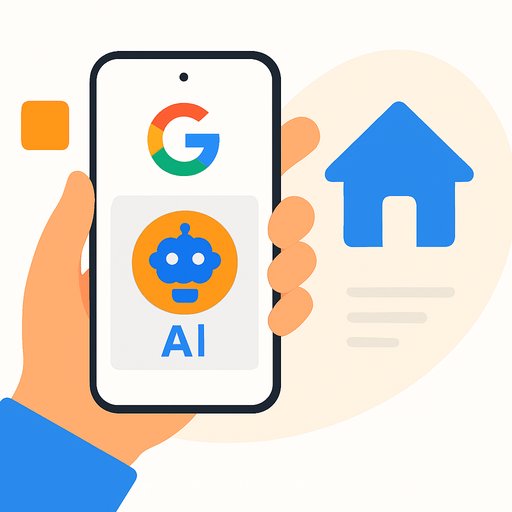What's Reasonable to Expect from Agentic AI in Pharma? Part Three: Tapping Agentic AI's Potential
October 4, 2025
Agentic AI-systems of autonomous, goal-driven agents coordinated by an orchestrator-fits pharma R&D because it deals in data density, complex processes, and high-stakes outcomes. The upside is clear: faster evidence generation, better decisions, and fewer manual handoffs. The risk is also clear: fragmented deployments, opaque decisions, and compliance gaps.
Key takeaways- Think in systems, not isolated use cases. Cross-discipline design beats "walled gardens."
- Balance freedom and control via bounded autonomy, policy-as-code, and human-on-the-loop supervision.
- Multi-agent frameworks coordinate tasks but need added layers for trust, safety, and compliance.
- Adopt a principles-based governance model that adapts to new use cases and regulations.
From scattered pilots to a product-grade system
Single-use bots deliver diminishing returns in pharma. Agentic AI pays off when agents can share context, compose capabilities, and keep learning across workflows. That requires an enterprise-wide vision, not point solutions.
Start with defined outcomes (e.g., faster protocol cycles, safer case triage, stronger signal detection), then work backward to the agents, data, and controls needed to achieve them.
Reference architecture: what IT and product need in place
- Experience and orchestration: Goals in; outcomes out. An orchestrator that assigns work to agents, tracks state, and enforces policies across steps.
- Agent runtime: Specialized agents (e.g., protocol author, evidence synthesizer, PV triage, site selection) with capabilities, tools, and clear permissions.
- Context layer: Retrieval and memory across vector stores and knowledge graphs; document lineage and citations; PHI/PII handling and de-identification.
- Policy and trust: Policy engine, safety checks, data access controls, provenance, audit trails, and explainability artifacts.
- Evaluation and quality: Scenario tests, red-team prompts, regression suites, offline/online metrics, and release gates.
- Data and integration: Clean data products with contracts; connectors to LIMS, CTMS, EDC, safety databases, and document systems.
- Observability: Traces, tokens, latency, cost, drift, and incident workflows.
- Security and identity: Fine-grained roles, least-privilege access, secrets management, and environment isolation.
Open-source multi-agent frameworks (e.g., AutoGPT variants, LangChain orchestration) can distribute tasks, but they don't solve trust, risk, or context by themselves. Add the policy, compliance, and evaluation layers from day one.
Bounded autonomy: give agents room without losing control
- Guardrails by design: Policies for data access, tool use, and approval thresholds codified as machine-readable rules.
- Graduated autonomy: Level 0 (view-only), Level 1 (draft), Level 2 (execute low-risk), Level 3 (execute with auto-approval under strict conditions).
- Human-on-the-loop: Humans supervise; they step in at risk triggers, uncertainty spikes, or policy violations-not at every step.
- Risk-aware routing: Escalate to experts for edge cases; require dual control for regulated actions (e.g., submissions, safety updates).
Governance that scales across geographies and use cases
Static, document-first governance won't keep pace with agent behavior. Move to principles-based controls that are testable, observable, and portable across products and countries.
- Ethics and risk: Align with recognized guidance such as the CIOMS work on AI in pharmacovigilance and the NIST AI Risk Management Framework.
- Data integrity: GxP-aligned audit trails, ALCOA+ principles, and 21 CFR Part 11 considerations for system outputs and e-signatures.
- Transparency: Model and dataset cards, citations, and decision rationales embedded in outputs.
- Change control: Versioning for prompts, tools, models, and policies with release approval gates.
CIOMS: Artificial Intelligence in Pharmacovigilance | NIST AI Risk Management Framework
Roles and accountability
- Product: Define outcomes, SLAs, and success criteria; own the roadmap and release gates.
- Domain SMEs: Specify acceptance criteria, edge cases, and escalation rules.
- Data and platform: Provide clean data products, lineage, and secure access patterns.
- MLOps/Agents: Build agents, evaluation suites, and policy-as-code; monitor and respond to incidents.
- Quality and compliance: Validate fitness for use; audit artifacts; handle regulatory interactions.
- Security: Identity, permissions, secrets, and threat modeling.
90-day implementation plan
- Weeks 1-3: Pick one end-to-end workflow (e.g., protocol drafting to approval). Map steps, data, controls, and success metrics.
- Weeks 4-6: Build thin slices: orchestrator, two agents, retrieval, policy checks, and eval harness. Use synthetic and historical test cases.
- Weeks 7-10: Run a guarded pilot with human-on-the-loop, capture metrics, and harden observability and audit.
- Weeks 11-13: Expand to a second agent and one integration; formalize gates for scaling.
What to measure
- Quality: Accuracy, completeness, citations, and SME acceptance rates.
- Speed: Cycle time reduction and time-to-decision.
- Compliance: Policy violations prevented, audit completeness, explainability coverage.
- Impact: Fewer protocol amendments, higher site activation speed, earlier safety signal detection.
- Cost: Hours saved, run costs per task, avoided rework.
High-value R&D use cases for agentic AI
- Protocol authoring copilot: Drafts sections, checks feasibility, and aligns with standards; routes open questions to SMEs.
- Evidence synthesis: Searches literature, extracts findings, cites sources, and flags contradictions.
- Site strategy: Reconciles prior performance, patient availability, and logistics to recommend sites with rationale.
- Data query assistant: Generates, routes, and resolves EDC queries with context and audit.
- PV intake and triage: Classifies cases, extracts fields, prioritizes risk, and escalates edge cases.
- Signal detection helper: Scans safety data, surfaces hypotheses, and proposes follow-ups with traceable logic.
- CMC documentation: Compiles sections from validated sources and enforces template compliance.
Anti-patterns to avoid
- Case-by-case bots without shared context or governance.
- Overly rigid rules that stall future use cases.
- Black-box outputs with no citations or audit trail.
- Skipping evaluation and drift monitoring.
- Unclear ownership across product, quality, and IT.
Bottom line
Aim to build 80% of a reusable, principle-led capability that works across products and geographies. Give agents clear goals, guardrails, and shared context; give humans the right levers to supervise and improve the system.
If your teams need structured upskilling on multi-agent patterns, evaluation, and policy-as-code, explore role-based learning paths here: Complete AI Training - Courses by Job.
Your membership also unlocks:










